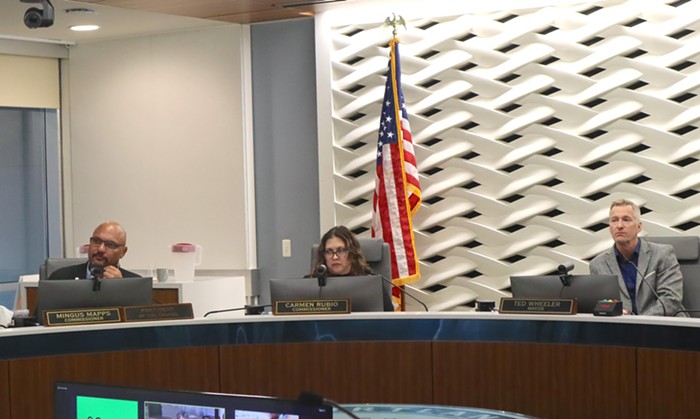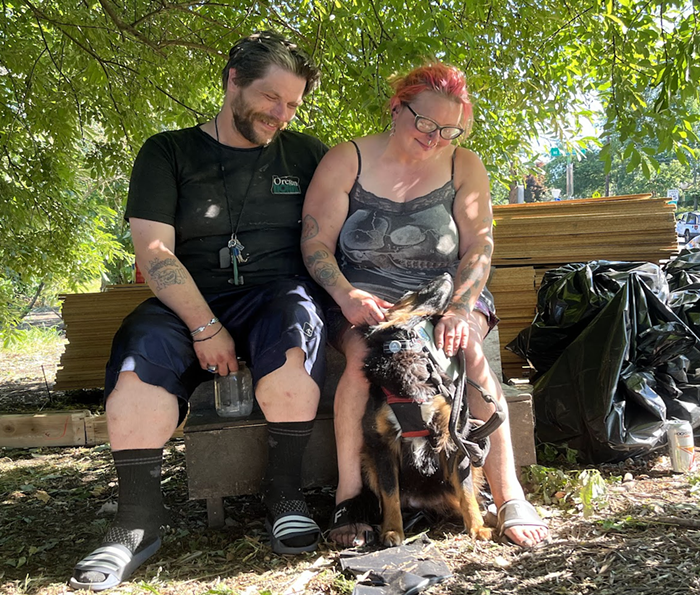It took six cold calls to the switchboard at NW Natural and three trips up the phone tree to get a firm "no" out of anyone.
NW Natural spokesperson Valerie White was vehemently against my pitch, so I asked to speak to her boss, Sandy Hart.
"She will not let you," said White.
So, let me ask her myself, I said. White sighed.
"No," Hart told me, calling back an hour later.
I begged. I offered cigars for the CEO. I offered to sign waivers. I pled insanity. Surely, I asked, someone has discretion to grant my request....
"No," Hart repeated. "No."
All of which made me more curious about the abandoned building by St. Helens Road, visible as you head north on the west side of the Willamette toward the St. Johns Bridge.
Speculation runs wild about the building's former uses. Blogtown readers called it the "Fight Club House" when I posted a picture asking questions, saying they daydream of Scooby-Doo adventures taking place inside. Others said it was a former home for juvenile delinquents, or a derelict train station.
It is none of the above.
The building, it turns out, was built in 1913 as the Portland Gas and Coke Company's gas plant—making gas from coal, according to White. It was closed in 1957 when the Gas and Coke Company changed its name to NW Natural, and is now awaiting cleanup from reported contamination associated with its former use.
"You can't go in there," said the security guard, when I showed up last Thursday morning, August 21, on the off chance that I'd get in. I had a secret weapon: the Oregonian's occasional architecture critic, Brian Libby, and hoped Libby's credentials—which he ultimately didn't even offer—might afford the pair of us a little leeway.
"And you can't take pictures either," the guard grumbled.
"I guess I'm just a Mercury reporter for today," Libby shrugged.
Defeated, we opted to carry out a critique of the building from just beyond the wire fence surrounding it. The building represents a curious transition between the 19th and 20th centuries, in that it is more sparsely modern than most old buildings, and yet far more design attention was clearly paid to it than to the modern industrial gas bubbles that now lurk behind it. It has sash windows, for example. And gables. These are odd touches for a building with its former function, and the clock tower, now missing its clock, is even historically suggestive of a newspaper building, Libby said. An ideal location for the Mercury's offices, I mused.
"If the building weren't what it is, you would have a beautiful old building at the foot of Portland's most beautiful bridge," Libby said, as a shower started to fall.
In the rain, the building took on an even more powerful emotional presence. I wouldn't be surprised if by 2030, it has been rehabilitated into a waterfront hotel on the Willamette, and NW Natural is a memory from the past. Structurally, the place seems in good condition, despite sitting vacant for 51 years.
"It feels like this building is being held prisoner," Libby continued. "Because it really seems to want to live, in a sense."
And it does. In an era where waterfront property is rapidly being given back to municipalities to be turned into viable commercial and residential centers, the fact that this building can sit derelict and be lorded over by a company clearly uninterested in satisfying my curiosity, or yours, seems nothing but a shame. Regardless of the security guard, I decided to snap a picture on our way out, just to get back at him.



















